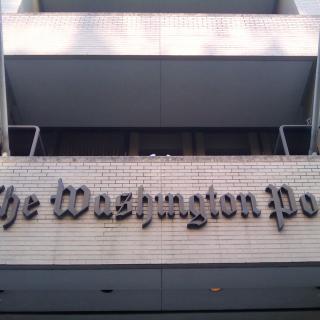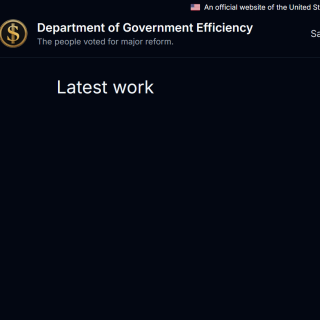Note: This essay in based completely on public records.
Part One
Scientific misconduct charges at Ohio State University (OSU) expose systemic misconduct, indeed institutional malpractice, of the institution itself.
In 2011, Purdue University medical researcher David A Sanders, PhD, informed the Ohio State University Medical Center (OSUMC) and the US Office of Research Integrity (ORI) that he was accusing Dr. Carlo Croce’s lab of scientific misconduct. OSU’s ORI closed the investigation in 2015 and concluded there was no misconduct. The charges were re-opened in 2017 after an article about Dr Carlo Croce in the New York Times accused him of misconduct, again with many quotes by David A Sanders.
OSU referred the accusations to a committee known as COMIC that focused their investigation on two female researchers in the Croce lab: Drs. Garofalo and Pichiorri. They had left OSUMC in 2014 and 2016 for positions in England and Los Angeles, respectively.
Other male researchers who conducted some of the experiments and developed figures on certain contested publications were not interrogated. Several remain at OSU. I also have received documentation that David A. Sanders has also been charged with scientific misconduct in his own work. This is under review by the Purdue University Office of Research Integrity.
A full nine to ten years after the initial charges – when OSU concluded that no misconduct occurred – OSU COMIC concluded in 2020 and early 2021 that Dr. Pichiorri had committed misconduct in three papers involving nine images. It also asserted that Dr. Garofalo committed misconduct in eight papers with four images and seven instances of plagiarism.
The ORI states that six months are its standard time frame from initiation of a specific complaint until its conclusion, not 10 years.
As I explain in detail below, multiple public records confirm without any doubt that Drs. Garofalo and Pichiorri are innocent of the allegations. Crucially, and definitively, many independent laboratories have replicated all of their original findings. These reports can be viewed on PUBMED.gov, the public repository of scientific articles by the National Institute of Health.
The small numbers of figures in their publications that are challenged are not important elements of their scientific contributions. This contrasts starkly with the papers in the Health and Human Services website in which the ORI concluded that misconduct was committed. In the latter group, as recently reported in a letter to the editor, widespread falsification and fabrication – with an average of 61 doctored images per paper – is the norm, and other labs cannot replicate the paper’s main conclusions.
Apparently in self-interest to distract attention from other allegations of misconduct OSUMC itself directly contacted multiple times the journals that published the disputed papers – Nature Medicine, Cancer Cell, and Journal of Experimental Medicine – urging them to retract the papers.
Retraction of papers from prestigious professional journals for scientific misconduct often ends investigators’ research careers. It is very difficult to secure additional funding.
Let’s explore specifically what scientific misconduct actually is and how this fundamental understanding confirms that Drs. Picchiori and Garofalo are innocent of allegations. I refer readers to a recently published review of this topic.
This article asked the critical question: what elements define documented scientific misconduct in papers investigated by the federal ORI in cases in which they concluded that misconduct in fact occurred? What do such studies have in common?
There are three key points:
1. In each case that was reviewed, no independent laboratory verified the principal, original results of the studies deemed falsified.
2. The studies’ authors could not produce the original experimental data essential to the main points.
3. Each paper presented massive falsification. As noted, on average in falsified reports, 61 falsified (re-used old data) or fabricated (the experiments were never conducted) images or data points were presented. These falsified data were central to the major purported arguments of the paper. This, in turn, explains why they could not be replicated.
The more I learn about this long-lasting, unprofessional persecution of young female scientists, the more I want to know. With the assistance of a continuing OSUMC faculty member, I obtained the OSUMC investigative committee’s report on Drs. Garofalo and Pichiorri, their responses to the journals and to OSU, and the three papers in question.
Three points leap off the pages. These are sets of facts and patterns of institutional action that the largest public needs to know.
1. Because these papers were published many years ago, it is important to document that more than 20 independent laboratories have replicated the principal findings of both Drs. Garofalo’s and Pichiorri’s contested publications. By itself, this fact should have persuaded scientifically the OSU committee that the data were accurate. Against all logic and straining credibility, the OSU ORI committee did not inquire into this and made no reference in its report. By itself, this should qualify as scientific and institutional misconduct.
2. In each example where allegations were made that their published images were falsified, Dr. Pichiorri produced the contents, results, and actual data. There was some mislabeling and duplication but in less than one percent of the total data presented.
For Dr. Garofalo, plagiarism was the main focus of the complaint. But the specific statements made were common points known to any researcher in the field; the articles from which they came were cited in the references.
Clearly, there was NO INTENT to deceive, which explains why their discoveries in these papers have advanced the field of medicine by being replicated and expanded on by many other independent labs. These mistakes are not uncommon in scientific papers and are addressed with corrections (as noted in the letter to the editor cited above).
With respect to the charge of plagiarism against Dr. Garofalo, the OSUMC pursuit violated the federal ORI’s definition of plagiarism: “ORI generally does not pursue the limited use of identical or nearly-identical phrases which describe a commonly-used methodology or previous research because ORI does not consider such use as substantially misleading to the reader or of great significance.” The letter to the editor also noted that the review of all misconduct cases to 2021 did not reveal one example of re-use of text.
3. The figures alleged to be falsified constituted only a small portion of very few papers. They did not relate directly to the major, original points of the research papers.
Each of these facts is significant. Together, they form an unmistakable case for the institutional failure of the OSUMC ORI. The first point is simple but critical. When someone with intent to “fabricate and falsify data,” especially in complex fields like cancer research, it impossible for researchers’ data to be universally correct. Working scientists know this. Anyone who completed high school or college-level science – or even social science – courses should know this.
This is part and parcel of the sordid story of OSU, OSUMC, and the elite medical establishment. Very strong evidence shows that OSU’s actions against Drs. Garofalo and Pichiorri are blatantly discriminatory and violate established codes of scientific conduct. Furthermore, this is part of a well-established pattern across the university, a magnification of national patterns.
Public records reveal that in at least two cases in which male researchers at OSUMC were accused of scientific misconduct, they were treated dramatically differently. Specifically, the two investigators were both male and in one case the person was found guilty of misconduct but was allowed to keep his job, whereas in another case, despite multiple letters indicating misconduct to OSU, the man was not even investigated and likewise was not fired. In comparison, OSU has banned both Drs. Garofalo and Pichiorri from ever getting another job at OSU.
As noted, several men played major roles in the three papers in question with Drs. Garofalo and Picchiori. This included some of the experiments that were considered to represent misconduct, but as indicated in the OSU report, they were never questioned.
As an internationally-known researcher with a PhD in history and social sciences, and OSU Emeritus Professor and Ohio Eminent Scholar, I know the central concepts in scientific misconduct well. They cross academic disciplines and fields of research. I cannot overemphasize that having papers retracted for scientific misconduct is harsh censure that has a high likelihood of ending a professional career.
Drs. Garofalo and Pichiorri engage in extremely significant research on cancer. In the contested publications, they pursue and answer questions about the role of proteins in aggressive forms of lung cancers; the reasons why multiple myeloma is incurable; and the factors shared by highly aggressive cancers that make them so lethal. In addition, based on Dr. Pichiorri’s research, OSU patented the drug that may cure certain types of breast cancer. Despite her contribution, OSUMC did not include her in the patent, another piece in the crooked puzzle.
In one of Pichiorri’s papers, the compounds described were clinically developed from three different pharmaceutical companies including Roche and Amgen. Nine such compounds were used in the clinic to cure malignancies. Preliminary clinical trial data show that some of these compounds are helping people with incurable cancers.
Part Two
Ohio State University Malpractices: Who wins, who loses, and at what costs?
Turning to longitudinal and latitudinal perspectives, it is undeniable that something other than identifying and policy misconduct responsibly transpires. This is Ohio State University’s practice of institutional and scientific abuse. It is both misconduct and malpractice. Present not only at OSU and OSUMC, this is part of institutional (mal)practice. It violates universities’ self-promoting slogans – the so-called “mission statements” – ethics; the terms of their federal and other research grants; and often state and federal laws.
OSU abuses its powers to crush “the little people” – the young, women and minorities, the untenured, and those without major grants and prestige, and its students. This is the contrasting “other side of the whole,” the institutional profits and prestige that OSU struggles to preserve and advance, often regardless of human costs.
At least since the first term of Gordon Gee’s two distinct periods as OSU president in the late 1990s, the once compact College of Medicine, associated with a few hospitals, grew enormously. While it also pursued prestige largely by hiring researchers with large grants and large laboratories from lesser institutions, the OSUMC was first and foremost a money-making venture, the proverbial “cash cow.”
To the discomfort of many of its patient providers and dissatisfaction of patients, its human relationships shifted in accord with its overriding goals. This ranges from its interfaces with patients, inhuman design of facilities, poor communication, obsession with billings, proliferation of specialty hospitals and units. It is as disorganized, disconnected, and leaderless as the rest of the too large university.
The medical “campus,” at one end of the main university, grows uncontrollably in part with tax abatements and give-backs from the City of Columbus. Disconnected suburban facilities proliferate.
The James Cancer Hospital incessantly promotes itself by proclaiming that “no two cancers are alike.” No one ever claimed that. The large medical center advertises relentlessly that it is “nationally ranked,” but never states its specific rank. Well, on occasion, it mentions that it is the “best in central Ohio.”
With all other central Ohio medical centers, OSUMC is relentlessly profit-centered. It has remarkably little interest in public health. Instead of serving Columbus’ neediest peoples in their “health deserts,” it premieres a rural physicians’ training program to appeal to the state’s rural right-wing and Republican-dominated state government.
Misconduct is central to its self-conduct. This is synonymous with institutional malpractice.
A powerful and ongoing example for several decades is the Dr. Richard Strauss scandal where the sports medicine team physician sexually abused at least as many as 600 OSU male students-student athletes from at least the 1980s in to the 2000s.
Coaches and administrators knew about this it for more than two decades but took no action first to stop Strauss, and even after public exposure, to compensate his victims fairly. OSU’s continuing legal and extra-legal tricks are not only an affront to all students. But they also compare poorly with the much more responsible actions of its peer institutions including arch-rival University of Michigan, Michigan State, Penn State, University of Southern California, UCLA, and others.
In the absence of sustained legal action, even less attention is paid to female student athletes (who are also dramatically under-supported compared to men), young women in the OSU March Band (the BDBITL or “the best damn band in the land”); and widespread rape not only in fraternities but also in first and second-year dormitories. Insufficient campus safety and student education undergirds off-campus life in the University District.
These discriminatory malpractices are firmly established not only at OSUMC but across OSU. The university goes to extraordinary extra-legal lengths to evade and deny its own responsibility for decades-long sexual abuse. Among professors outside the OSUMC, at least two natural scientists were permitted to complete their careers and only have their Emeritus or retired titles removed. At least one department chair was removed from office without other penalties. All women and one male staff members in that department resigned.
There is at present no rhetorical or institutional end in sight. It is only 2022. OSU repeats slogans of its verbal commitment to diversity and inclusion but not equity. In its most recent ads, the OSUMC equate itself with the Buckeyes’ football team.
----------------------------------------------------------
Harvey J. Graff is Professor Emeritus of English and History at The Ohio State University and inaugural Ohio Eminent Scholar in Literacy Studies. Author of many books, he writes about a variety of contemporary and historical topics for Times Higher Education, Inside Higher Education, Academe Blog, Washington Monthly, Publishers Weekly, Against the Current; Columbus Free Press, and newspapers. Searching for Literacy: The Social and Intellectual Origins of Literacy Studies was published by Palgrave Macmillan in August. My Life with Literacy: The Continuing Education of a Historian. The Intersections of the Personal, the Political, the Academic, and Place is forthcoming.



